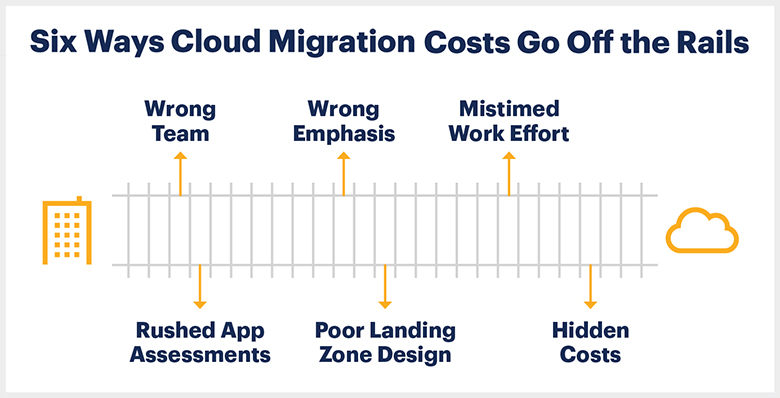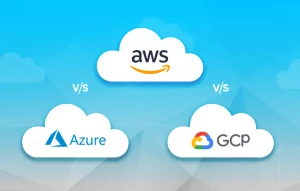Chief technology officers (CTOs) are at the forefront of strategic decision making in the ever-evolving landscape of digital transformation. As businesses increasingly embrace cloud computing to drive agility, scalability, and innovation, the role of CTOs becomes pivotal in orchestrating seamless cloud migrations. However, this journey is not without its hurdles. From legacy system integration to data security concerns, CTOs face a myriad of challenges when migrating to the cloud.
As the role of CTOs becomes increasingly demanding, navigating the complex landscape of technology and strategy becomes difficult. CTOs have to manage their tech teams’ evolving needs while simultaneously aligning with C-level cloud migration strategies. The introduction of a distributed workforce further amplifies these challenges, requiring a delicate equilibrium between budgetary considerations, headcount strategies, security, infrastructure, and development priorities.
In this article, we delve into the top cloud migration challenges faced by CTOs in 2024 and beyond. These challenges, once daunting, can now be effectively addressed through cloud solutions. Whether it’s safeguarding data, accelerating development, or building cost optimization strategies, the cloud offers a transformative path for CTOs to overcome obstacles and drive innovation.

Source: Gartner
Top 5 cloud migration challenges for CTOs and their solutions
1. Legacy system integration:
One of the primary challenges CTOs face during cloud migration is integrating legacy systems with modern cloud environments. Legacy systems often have complex architectures, outdated technologies, and dependencies that can hinder seamless integration with cloud platforms.
Around 86% of companies believe that outdated technology and inflexible systems hinder their ability to respond effectively to customer needs. – McKinsey & Company
Solution: CTOs can overcome this challenge by adopting a phased migration approach. This involves identifying critical systems for migration, implementing compatibility layers or APIs to bridge legacy and cloud systems, and gradually transitioning workloads to the cloud while ensuring minimal disruption to business operations.
2. Data security and compliance:
Ensuring data security and compliance with regulatory standards is an important concern for CTOs when migrating to the cloud. The decentralized nature of cloud environments and the need to protect sensitive data pose significant challenges in maintaining robust security measures.
Data breaches can cost millions to a company. In 2023, detection and escalation represent the largest share of breach costs, at an average total cost of $1.58 million. – IBM
Solution: CTOs can implement a comprehensive security strategy that includes data encryption, access control mechanisms, regular audits, and compliance monitoring tools. Leveraging cloud-native security services and partnering with trusted cloud providers that offer built-in security features can enhance data protection and ensure regulatory compliance.
3. Performance and scalability issues:
Maintaining optimal performance and scalability in the cloud can be challenging for CTOs, especially when dealing with fluctuating workloads, resource allocation, and network latency issues.
Cloud performance boosts efficiency. Nearly 80% of IT professionals say moving to the cloud improved their productivity, according to a research by Office 365.
Solution: CTOs can address performance and scalability challenges by leveraging cloud-native technologies such as auto-scaling, load balancing, and serverless computing. Implementing performance monitoring tools, optimizing resource utilization, and conducting periodic performance testing can also enhance application responsiveness and scalability in the cloud.
4. Cost management and optimization:
Cloud migration often comes with cost implications, including infrastructure provisioning, data storage, and usage charges. CTOs need to optimize cloud spending while ensuring efficient resource allocation and cost-effective operations.
Companies can reduce total cost of ownership (TCO) by as much as 40% by migrating their business to the public cloud. – Accenture
Solution: CTOs can implement cost management strategies such as cloud resource tagging, rightsizing instances, utilizing reserved instances or spot instances, and leveraging cost optimization tools provided by cloud providers. Conducting regular cost audits, optimizing workload distribution, and implementing governance policies can help mitigate cost overruns and maximize ROI from cloud investments.
5. Organizational change and skill gaps:
Cloud migration requires a shift in organizational culture, processes, and skill sets. CTOs often encounter challenges related to change management, talent acquisition, and upskilling existing teams to adapt to cloud technologies.
In March 2023, over 85% of the surveyed IT decision-makers stated that the lack of skills and expertise in cloud operations has impacted somehow or significantly the ability of their companies to achieve their business goals. – Statista
Solution: CTOs can address organizational change and skill gaps by fostering a culture of continuous learning and innovation. Hiring external cloud experts or consultants helps businesses to adopt best practices for cloud migration within the organization. This saves cost, time and efforts of hiring and training internal IT teams.
Suggested: Successful businesses must be cloud-based. Why?
The strategic benefits of cloud migration for CTOs
1. Scalability and flexibility:
Cloud platforms offer unparalleled scalability, allowing CTOs to scale resources up or down based on demand. This flexibility enables organizations to adapt quickly to the changing market conditions, accommodate growth, and optimize resource utilization.
2. Cost efficiency:
Cloud migration can lead to significant cost savings by eliminating the need for upfront hardware investments, reducing maintenance costs, and optimizing resource usage. CTOs can leverage pay-as-you-go pricing models and cloud-native cost optimization tools to control expenses effectively.
3. Enhanced security and compliance:
Leading cloud providers invest heavily in security measures, offering robust data encryption, access control, and compliance frameworks. By migrating to the cloud, CTOs can enhance data security, mitigate risks, and ensure compliance with regulatory standards.
4. Improved collaboration and accessibility:
Cloud-based collaboration tools and platforms enable seamless communication, collaboration, and knowledge sharing across geographically dispersed teams. CTOs can leverage cloud solutions to enhance productivity, streamline workflows, and foster innovation.
5. Agility and innovation:
Cloud technologies empower CTOs to innovate rapidly, experiment with new ideas, and launch products or services faster. By leveraging cloud-native services such as AI, machine learning, and analytics, organizations can drive innovation, gain competitive advantages, and stay ahead of market trends.
Suggested: Optimizing cloud costs: Avoid these 5 mistakes that inflate cloud bills
6. Business continuity and disaster recovery:
Cloud platforms offer robust business continuity and disaster recovery capabilities, ensuring data redundancy, backup, and recovery options. CTOs can minimize downtime, mitigate risks, and maintain uninterrupted operations even during unforeseen events.
7. Global reach and scalability:
Cloud migration enables organizations to expand their reach globally, access new markets, and scale operations effortlessly. CTOs can leverage cloud infrastructure to deploy applications and services closer to end-users, improving latency, performance, and user experience.
Empowering organizations with seamless cloud migration: Softweb Solutions’ expertise
Softweb Solutions is a leading provider of cloud migration services, empowering organizations to harness the full potential of cloud technologies and achieve strategic advantages in today’s digital landscape. Here’s how Softweb Solutions can assist organizations in overcoming cloud migration challenges and realizing the benefits of transitioning to the cloud:
- Comprehensive assessment and planning
- Legacy system integration and modernization
- Security and compliance assurance
- Optimized resource allocation and cost management
- Performance optimization and scalability
- Continuous support and maintenance

Explore the best strategies to migrate to the AWS cloud
The cloud serves as a tool, not a destination. For insights on leveraging AWS services and cloud migration strategies, explore the whitepaper on migrating to AWS cloud.
Softweb Solutions empowers organizations with end-to-end cloud migration services, from assessment and planning to integration, security, optimization, and ongoing support. By leveraging Softweb Solutions’ expertise, organizations can navigate cloud migration challenges effectively, capitalize on cloud benefits, and achieve digital transformation success in today’s competitive business landscape.
Navigating cloud migration challenges for digital transformation
Navigating the complexities of cloud migration requires strategic planning, technical expertise, and a trusted partner like Softweb Solutions. By leveraging professional AWS migration services and addressing key challenges, organizations can unlock the strategic benefits of cloud technologies.
Softweb Solutions’ comprehensive approach to cloud migration for enterprises empowers chief technology officers and organizations to embrace digital transformation, drive innovation, enhance agility, and achieve competitive advantages in today’s dynamic business environment. With the right strategy, tools, and support, organizations can harness the full potential of the cloud and position themselves for long-term success in the digital era.









